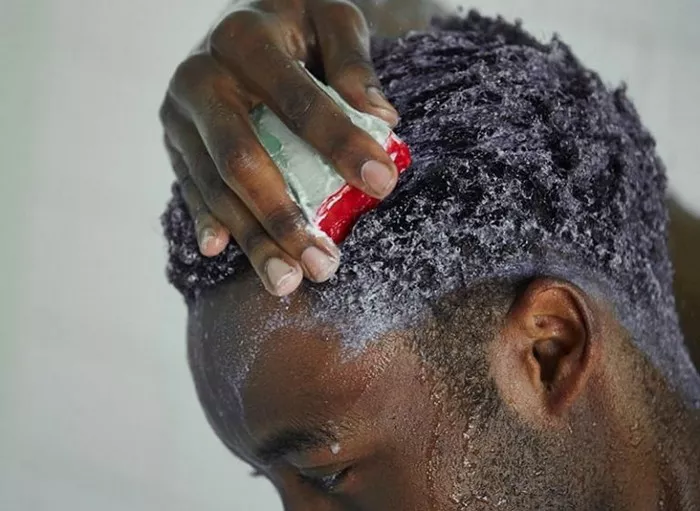Dreadlocks, a symbol of cultural heritage and personal expression for many, require dedicated care to maintain their health and vitality. Proper maintenance is essential not only for aesthetic reasons but also for the overall health of your scalp and hair. Neglecting to wash dreadlocks can lead to buildup, odors, and even mold or mildew growth. In this comprehensive guide, we will explore the best practices for washing dreadlocks, including suitable products, washing techniques, frequency, drying methods, maintenance tips, and common mistakes to avoid.
Suitable Products
Choosing the right products is crucial for washing dreadlocks effectively without causing damage or buildup. Look for shampoos and cleansers specifically formulated for dreadlocks. These products are often gentle, residue-free, and designed to cleanse without unraveling or frizzing the locks. Natural ingredients such as tea tree oil, rosemary, and aloe vera can help soothe the scalp and promote healthy hair growth.
Some popular options include:
1. Residue-Free Shampoos: These shampoos are specially formulated to rinse out completely, leaving no residue behind. They are ideal for dreadlocks to prevent buildup and maintain cleanliness.
2. Clarifying Shampoos: Occasionally, dreadlocks may require a deeper cleanse to remove stubborn buildup or residues from other hair products. Clarifying shampoos can effectively remove impurities without stripping the hair of its natural oils.
3. Liquid Shampoos vs. Bars: Liquid shampoos are convenient for thorough cleansing, while bar shampoos are eco-friendly and travel-friendly options. Both can be suitable for dreadlocks, depending on personal preference.
Washing Techniques
Proper washing techniques are essential for preserving the integrity of your dreadlocks. Follow these steps to wash your dreadlocks effectively:
1. Preparation: Wet your dreadlocks thoroughly with lukewarm water. This helps to loosen any dirt or buildup trapped within the locks.
2. Shampoo Application: Apply a small amount of shampoo to your palms and work it into a lather. Gently massage the lather into your scalp and dreadlocks, focusing on the roots and areas prone to buildup.
3. Rinsing: Rinse your dreadlocks thoroughly with lukewarm water until the water runs clear. Make sure to rinse out all traces of shampoo to prevent residue buildup.
4. Optional Conditioning: Depending on your hair type and preference, you may choose to follow up with a lightweight conditioner or dreadlock-specific moisturizer. Be cautious not to over-condition, as excess moisture can lead to mildew growth.
5. Final Rinse: Finish with a final rinse of cool water to close the hair cuticles and seal in moisture.
Frequency of Washing
The frequency of washing dreadlocks depends on various factors, including lifestyle, scalp health, and the maturity of your dreadlocks. As a general guideline:
1. Active Lifestyles: If you lead an active lifestyle or engage in activities that cause sweat or dirt buildup, you may need to wash your dreadlocks more frequently. Aim to wash every 1-2 weeks to maintain cleanliness.
2. Scalp Health: Pay attention to your scalp health. If you experience itching, flakiness, or irritation, it may indicate the need for more frequent washing to remove buildup and soothe the scalp.
3. Dreadlock Maturity: Newly formed dreadlocks may require less frequent washing to allow the locks to mature and tighten naturally. As your dreadlocks mature, you may gradually increase the frequency of washing based on your hair’s needs.
Drying Methods
Proper drying is essential to prevent mold and mildew growth within your dreadlocks. Follow these tips to dry your dreadlocks effectively:
1. Air Drying: The most natural and gentle method of drying dreadlocks is air drying. After washing, gently squeeze out excess water from your dreadlocks and allow them to air dry completely. Avoid rubbing or wringing out your dreadlocks, as this can cause frizz and damage.
2. Towel Drying: If you prefer to speed up the drying process, use a clean, microfiber towel to gently pat your dreadlocks dry. Avoid rubbing vigorously, as this can cause friction and frizz.
3. Avoid Heat: Refrain from using heat styling tools or high-heat hair dryers to dry your dreadlocks, as excessive heat can damage the hair and scalp. If you must use a hair dryer, opt for a low-heat setting and keep it at a safe distance from your dreadlocks.
Maintenance Tips
In addition to regular washing, there are several maintenance tips to keep your dreadlocks healthy and vibrant:
1. Regular Tightening: As your dreadlocks mature, they may loosen or unravel slightly. Schedule regular maintenance appointments with a professional loctician to tighten and maintain the integrity of your dreadlocks.
2. Moisturizing: Keep your dreadlocks moisturized to prevent dryness and breakage. Apply a lightweight oil or moisturizing spray to the lengths of your dreadlocks, focusing on the ends and areas prone to dryness.
3. Protective Styling: Experiment with protective styles such as braids, twists, or updos to minimize friction and reduce stress on your dreadlocks. These styles can help preserve the shape and integrity of your locks between washes.
Common Mistakes
Avoid these common pitfalls in dreadlock care to ensure the longevity and health of your locks:
1. Using the Wrong Products: Avoid using traditional shampoos or hair care products containing heavy oils, silicones, or sulfates, as these can cause buildup and prevent dreadlocks from locking properly.
2. Over-Washing: While cleanliness is important, over-washing can strip the hair of its natural oils and disrupt the balance of the scalp. Stick to a regular washing routine based on your hair’s needs and lifestyle.
3. Neglecting Drying: Ensure your dreadlocks are thoroughly dry after washing to prevent mold and mildew growth. Damp or wet dreadlocks are a breeding ground for bacteria and fungi, leading to unpleasant odors and potential scalp infections.
In conclusion, proper washing and maintenance are essential for keeping your dreadlocks clean, healthy, and vibrant. By choosing suitable products, mastering washing techniques, adjusting the frequency of washing, employing effective drying methods, and following maintenance tips while avoiding common mistakes, you can enjoy beautiful and well-maintained dreadlocks for years to come.


